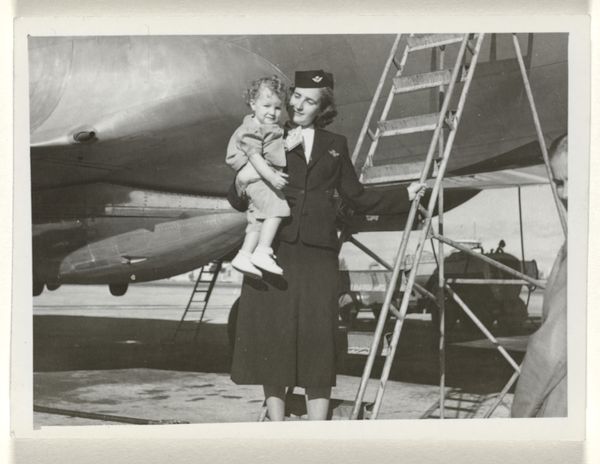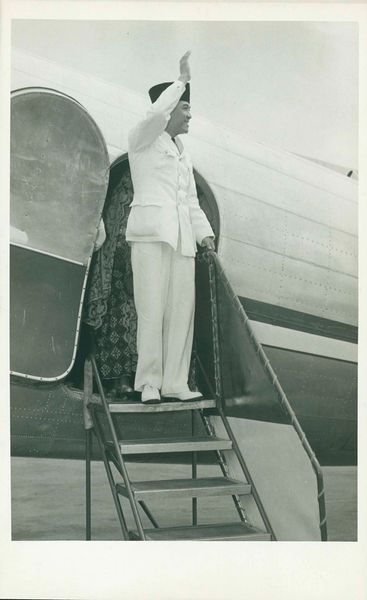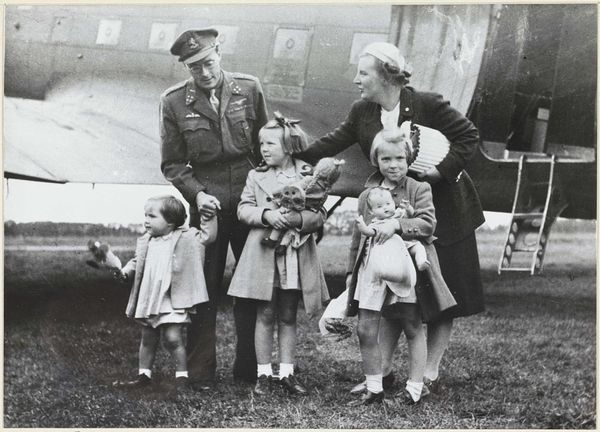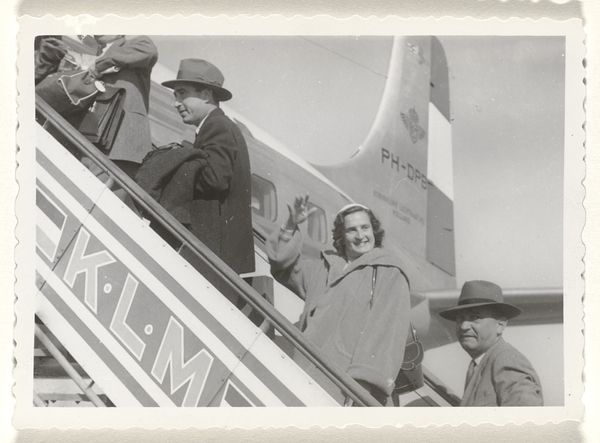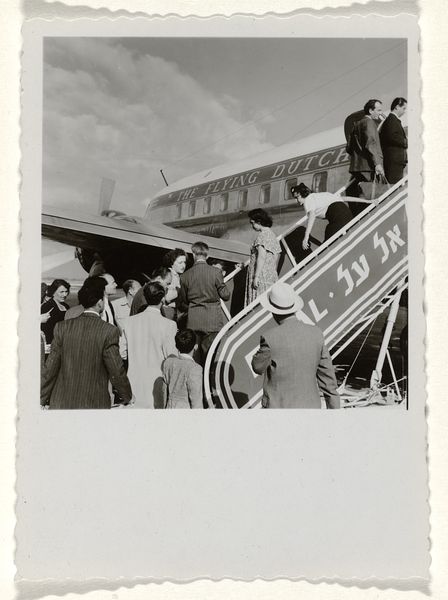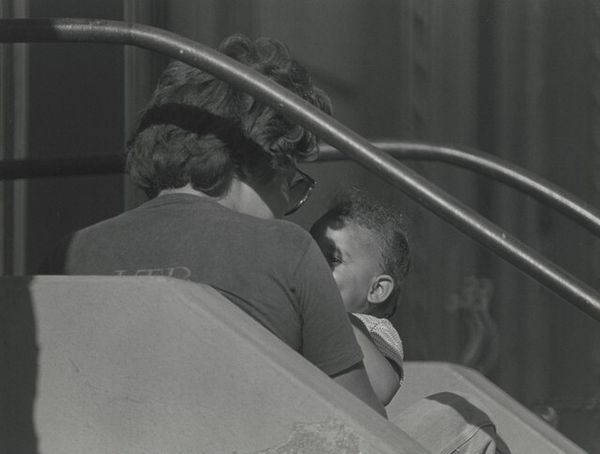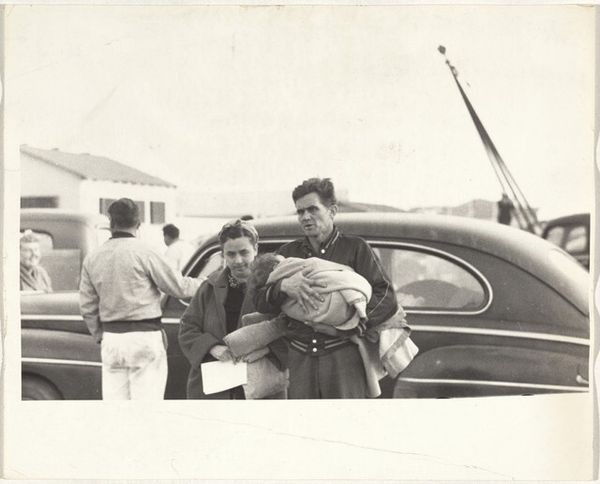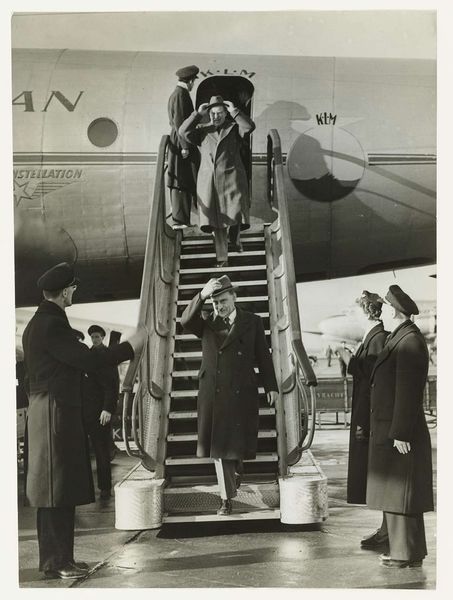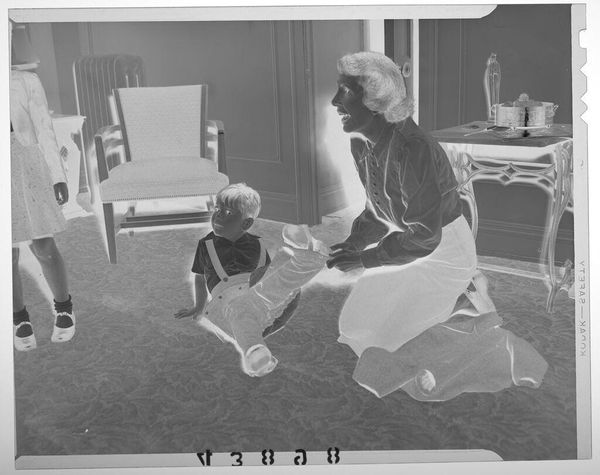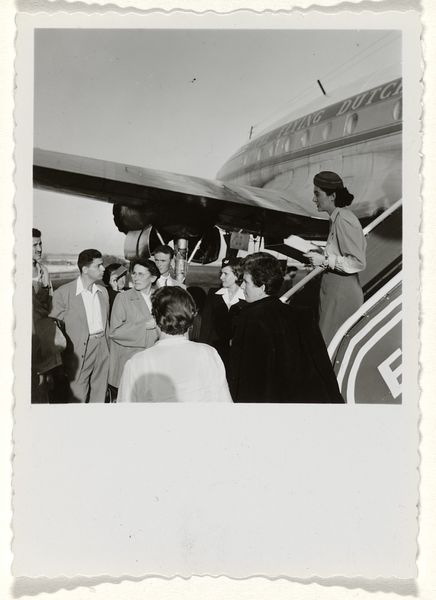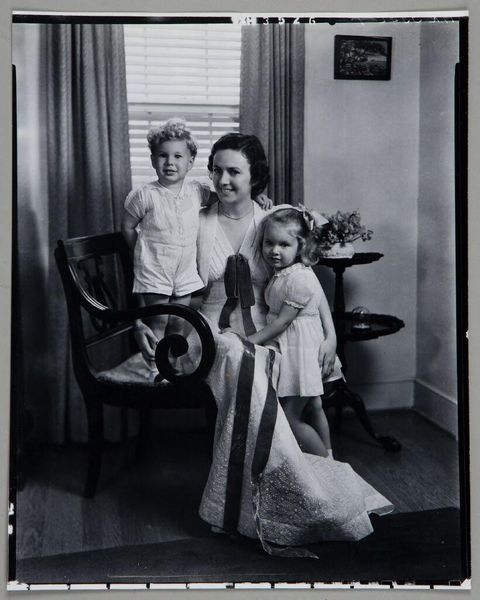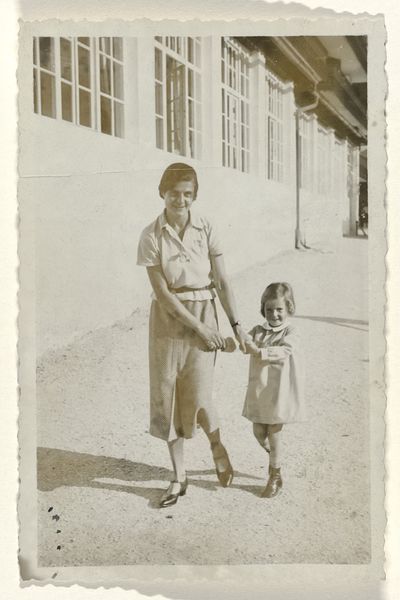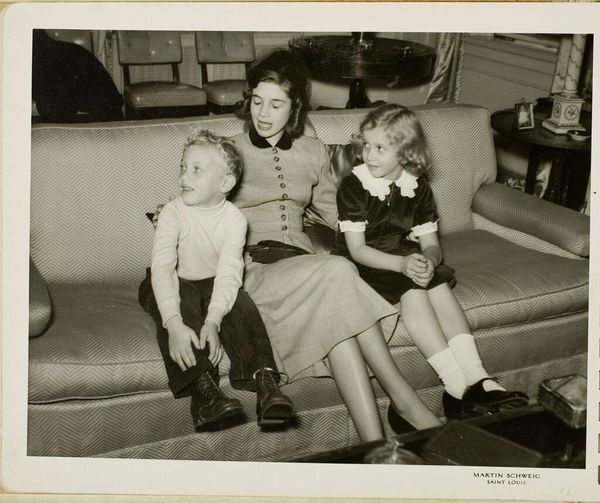
Isabel Wachenheimer in uniform van de KLM, staand naast een trap envoor een vliegtuig, met een kind op haar arm 1947 - 1955
0:00
0:00
photography, gelatin-silver-print
#
photography
#
black and white
#
gelatin-silver-print
#
monochrome photography
#
realism
#
monochrome
Dimensions: height 65 mm, width 90 mm
Copyright: Rijks Museum: Open Domain
Editor: This gelatin-silver print, titled "Isabel Wachenheimer in uniform van de KLM, staand naast een trap envoor een vliegtuig, met een kind op haar arm," dates from 1947 to 1955. It's a poignant black and white image of a KLM uniformed woman holding a child near an airplane. What strikes me is how ordinary it feels, yet it captures a specific time and place. What do you see in this piece? Curator: I see a potent record of labor, gender roles, and the evolving landscape of commercial aviation. This isn’t just about a mother and child; it’s about the accessibility of flight changing and who had access to it. Look at the materials – the uniform, the silver gelatin print. What stories do these objects tell? Editor: That's interesting. The uniform clearly marks her profession and maybe suggests a new role for women in the post-war era? And photography as a medium, documenting everyday lives, not just portraits of the elite? Curator: Exactly. Consider the labor involved: The labor of the woman as a KLM employee, likely ground staff. Think about the materiality of flight, and its relationship to leisure and commerce, which were intertwined during that period. Also, the making of this photograph. Silver gelatin printing would have involved mixing chemicals and darkroom techniques, reflecting a specialized labor process different from today’s digital image capture. Editor: I hadn't thought about the layers of labor embedded in both the subject and the creation of the photograph itself. So, the image is both capturing labor, and is the product of labor? Curator: Precisely. Even the materials that constitute the photograph - paper, silver - where did they come from? What was the process? Consider it as part of a broader web of production and consumption. How does understanding its materiality impact our understanding of the image? Editor: I guess focusing on materials and labor changes how we value the photograph, understanding it as more than just a nostalgic image. Thanks, I am leaving with many new things to consider. Curator: My pleasure. Looking at these kinds of images can teach us so much about the intersection of social structures and daily life through objects.
Comments
No comments
Be the first to comment and join the conversation on the ultimate creative platform.
